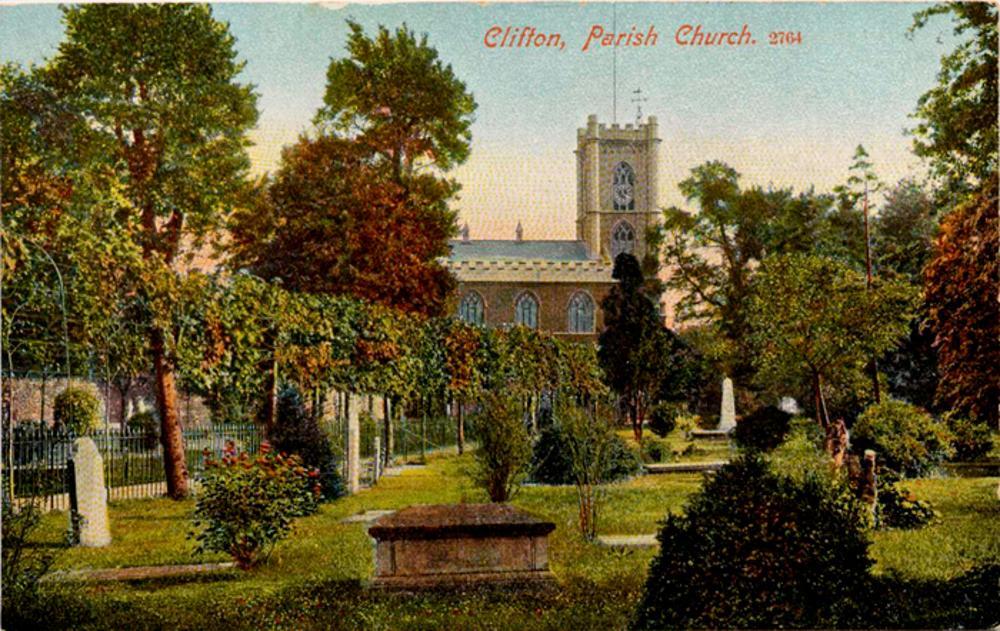Clifton church early 20th Century (BRO Postcards/47/3)
With the consecration of the new St Andrew’s church in August 1822, Clifton gained not only a parish church that could comfortably seat up to 1600 people, but also a new churchyard, which by the early twentieth century would be recognised as one of the most beautiful in the country.
The churchyard was developed during the nineteenth century burial ground boom, which was influenced by garden writer John Claudius Loudon and his book On the Laying Out, Planting and Managing of Cemeteries (1843). At a time when urban graveyards had degenerated into the scenes of horror described by Charles Dickens in Bleak House (1853), Loudon argued that although the main purpose of a burial ground was “the disposal of the remains of the dead in such a manner as that their decomposition…shall not prove injurious to the living,” a graveyard should also encourage, “the improvement of moral sentiments and general taste.” Quoting Washington Irving, he explained that the grave should be a, “place not of disgust and dismay, but of sorrow and meditation.”
Believing that these practical, moral and aesthetic aims could be met by a well-planned garden cemetery with rules and regulations for its design and management, Loudon set out a detailed methodology for the implementation of his theories and the St Andrew’s churchwardens appear to have followed his advice.
At St Andrew’s churchyard, the most celebrated feature is a lime tree avenue that runs from the church to Victoria Square. In line with Loudon’s view that trees should not impede good ventilation or take up space that could be used for graves, the avenue was planted along both sides of the churchyard path. As the trees grew, weeping branches were trained on wires, tubes and iron supports to create a shady canopy over the path, which became known as Birdcage Walk.
Loudon disapproved of planting that suggested a pleasure garden, but he was in favour of single shrubs or trees planted to allow plenty of space for new graves. This was the approach taken by Dr Arthur Prowse, churchwarden of St Andrew’s from 1888 to 1915 and a keen botanist. Dr Prowse worked closely with knowledgeable amateur gardener Edric Hopkins, who lived at Worcester Terrace in the early 1900s and who donated many of the flowering shrubs and trees - magnolias, lilacs, hydrangeas, eucalyptus and ornamental pear trees – that adorned the churchyard.
On 20 June 1910, The Times and Mirror reported that St Andrew’s churchyard was, “the most carefully tended burial place in the whole city, with its magnificent avenue, well-mown turf and beautiful shrubs.” The Western Daily Press agreed and on 18 April 1911 wrote that the churchyard was, “a lovely sight.” The parish, it said, “had every reason to be proud of the place.”
